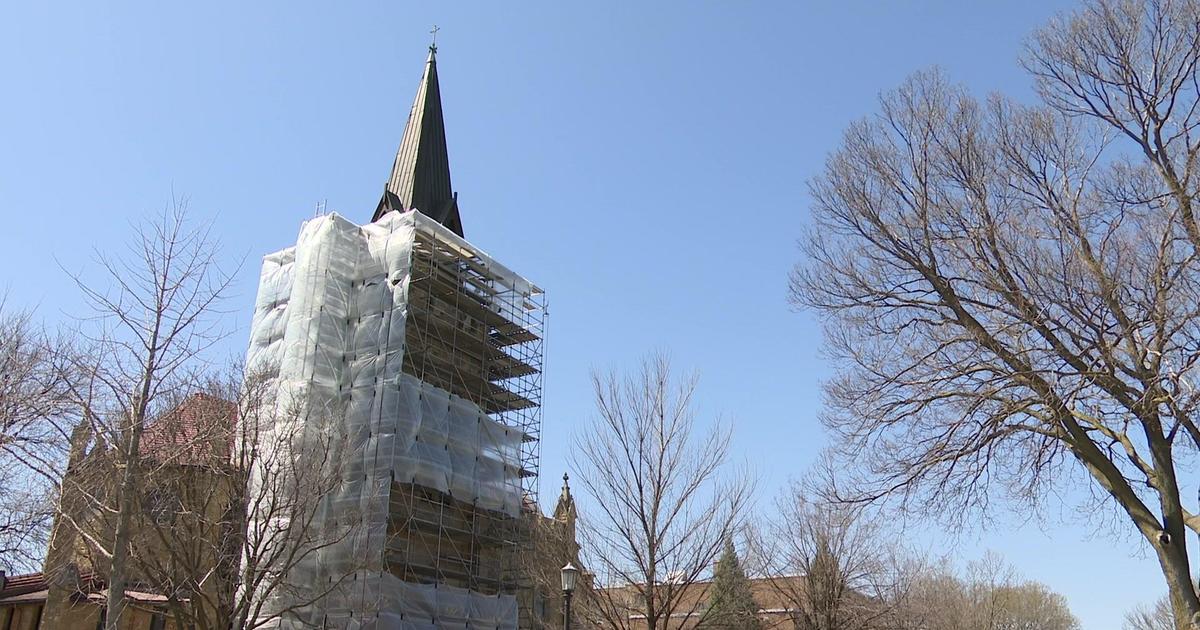Capitol Renovation Sparks Debate On Building's Art
ST. PAUL, Minn. (AP) — Besides being the seat of state government, the Minnesota Capitol is practically an art gallery, filled with murals of historic scenes and allegorical images of virtues the building's designers hoped to see in their leaders: wisdom, courage, integrity.
But almost 110 years after the Statehouse opened, a massive renovation project has provoked a mild but deeply felt debate about the artwork, with some lawmakers hoping to update a calcified collection and others committed to leaving it unchanged.
An impromptu remark by Democratic Gov. Mark Dayton helped spark the discussion when he wondered during a renovation-related meeting whether his reception room really needed six paintings of Civil War scenes.
"People should be proud of what Minnesotans did in the Civil War," said state Rep. Diane Loeffler, a Minneapolis Democrat on a committee overseeing the renovation. "But maybe a lot of us would like to see the story of some contributions since then."
The governor later clarified that he only meant to start a dialogue about the art, and he got it. Rep. Dean Urdahl, a Republican from Litchfield, was among those taking the conservative view.
"The Civil War paintings should stay where they are," Urdahl said. "Things that today could be interpreted as bad or violent, that's our state's history too."
When the Capitol opened in 1905, almost all of Minnesota's political and business leaders were men who had served in the Union Army.
"The war was the paramount event of their lives, and of most of the nation's at that point, which is why it's so heavily depicted," Urdahl said.
Today, Loeffler said, Minnesota "is a story of leaders of both genders, all different kinds of ethnicities and races.
The Capitol's most prominent artwork is "The Battle of Nashville" by Howard Pyle, a popular children's book illustrator of the time, showing the Union attack on a Confederate position outside that Tennessee city.
When a mural titled "The Divine and Moral Law" debuted at the Capitol in the early 20th century, a New York art critic supposedly pronounced the depiction of Moses on Mount Sinai the best work yet by famed Greenwich Village painter John LaFarge.
The late 19th and early 20th centuries saw a boom in construction of state capitols, county courthouses, libraries and other large public buildings. Most common was the Italian Renaissance style of the Minnesota Capitol, with art that was heavy on Roman and biblical imagery that recalled the European masters.
The designer of the Capitol, architect Cass Gilbert, was also influenced by an architectural movement of the time known as Beaux-Arts, which emphasized the incorporation of art into large buildings. Gilbert left lots of open wall space for framed paintings and large murals in the House, Senate and Supreme Court chambers and the rotunda.
Beaux-Arts designs were widely adopted throughout the U.S. after the 1893 World's Fair in Chicago, where noted architects constructed the so-called White City.
"They understood that a lot of these places didn't have art museums," said Brian Pease, the Capitol's historic site manager. "This was a place for them to bring culture and education to the forefront of the public. It was an opportunity to see classical works of art, which in Minnesota in 1900 didn't come easy."
Today, much of Gilbert's wall space has been filled with portraits of Minnesota's 39 governors. Dayton questioned whether a painting of every single governor still needs to be hung in public, a tradition that started in the 1940s.
Beginning in the spring, work crews will take down paintings and sculpture and cover murals and statues. The Capitol will be a construction zone through 2017. Lawmakers themselves will be forced out for part of that time, though final arrangements have not been made for where they will meet.
The newly remodeled building will have additional space for art, particularly in a new basement commons area. Loeffler said she hopes that's a place where newer works — perhaps by Minnesota artists — could be emphasized. She suggested art that portrays the state's many distinct geographical regions or work that highlights some of the state's greatest accomplishments.
Historic or allegorical art like Minnesota's is common in capitol buildings across the U.S., but some states' collections are broader. The New Mexico Capitol in Santa Fe houses a rotating modern art collection that its curators describe as one of the most comprehensive in the region.
Such art has not been without controversy. In Washington state, the House of Representatives voted in 1982 to cover a series of murals titled "The Twelve Labors of Hercules" because some lawmakers felt the images were obscene. The murals were later removed from the chamber and now hang at a nearby college.
Kate Solomonson, an associate architecture professor at the University of Minnesota, said she loved that the debate had been opened. She called the Capitol a "living building" that should not be treated as a time capsule.
"It's full of life," said Solomonson, who is working on a pair of projects focusing on Cass Gilbert. "It has served as a backdrop for countless demonstrations. Interior spaces have hosted endless debates."
She suggested the building's curators consider art that takes on the same issues lawmakers did.
"Why could we not have artwork that deals with political issues?" she wondered.
In Minnesota, a subcommittee of the commission overseeing the renovation will decide on the building's artistic assets.
"What is the story we want to tell about Minnesota to the people who come here?" Loeffler asked. "It's going to be a lively discussion."
(© Copyright 2014 The Associated Press. All Rights Reserved. This material may not be published, broadcast, rewritten or redistributed.)



